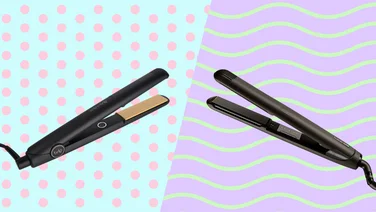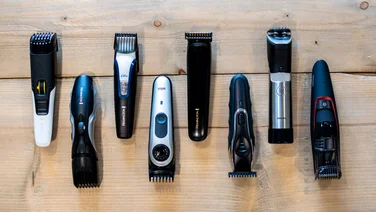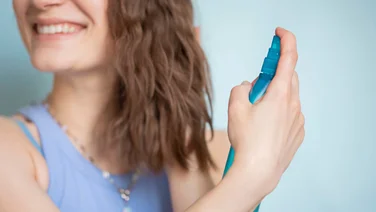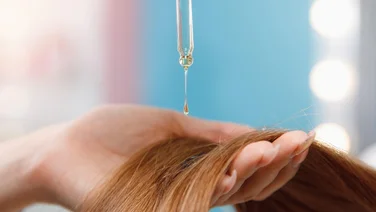To help us provide you with free impartial advice, we may earn a commission if you buy through links on our site. Learn more

Static hair can be annoying; it can also make your hair harder to style and manage. While it’s not the end of the world, it’s still frustrating, especially if flare ups happen regularly or right after styling.
If you experience static hair but you’re not sure why, you’re not alone. Let’s take a look at what causes the problem and what you can do to stop it.
What causes static hair?
Static hair is a common problem – it happens when hair becomes charged with static electricity and individual strands repel each other, resulting in a frizzy, flyaway look.
One of the main causes is dry air, especially during the colder months when indoor heating systems kick in. Low humidity can strip moisture from the hair, leaving it more prone to static electricity. When the air lacks moisture is when strands start to stand on end.Speaking of which, the friction between hair strands or between hair and other materials like scarves, hats or pillowcases can generate static electricity. This is the same when it comes to brushing your hair vigorously, using certain types of combs or rubbing against certain fabrics. They all lead to the build-up of static electricity on the hair.
Fabrics made from synthetic materials like nylon and polyester are more prone to creating static electricity than natural fibres like cotton or silk. When hair comes into contact with synthetic fabrics, the friction between the two can result in the transfer of electrical charges which leads to the dreaded static hair.
Dry and damaged hair is more susceptible to static electricity too. When the hair’s outer cuticle layer is compromised by damage, it allows moisture to escape from the inner layers. This makes your hair become more porous (meaning it absorbs and retains more moisture) making it more prone to static build-up. Regular use of heat-styling tools, exposure to harsh weather and certain hair treatments can all contribute to damage and moisture loss – and therefore more static.
Hair that’s been overly processed or chemically treated can be more prone to static for the same reasons. Chemical treatments, like bleaching or excessive use of hair dyes can strip the hair of its natural oils and disrupt the delicate moisture balance, making it more vulnerable to static electricity.
READ NEXT: Best products for frizzy hair
What hair types are more prone to static hair?
As well as hair texture, moisture levels and the structure of your hair cuticle, your hair type can also contribute to the static you’re experiencing.
Hair that’s naturally dry or has been damaged by chemical treatments, excessive heat styling or environmental factors is more likely to become static. Dry hair doesn’t have the moisture to keep the cuticle smooth and prevent the build-up of static electricity.
Fine hair is another hair type that can be affected by static more often. These kinds of strands have a smaller diameter and less surface area, which means they can become charged more easily. Also, fine hair is often more prone to breakage and damage, contributing to static issues.
High porosity hair absorbs moisture quickly but may struggle to retain it, making it more prone to dryness and static. Overly porous hair can be due to damage or natural characteristics.
Straight hair tends to lie close to the scalp and other strands, increasing the likelihood of friction and static generation. The lack of natural curls or waves that can create space between strands makes straight hair more susceptible to static too.
Hair extensions made from synthetic materials are more likely to generate static compared to natural human hair extensions. Synthetic fibres – just like synthetic fabrics – can create friction, leading to a build up of static electricity.
READ NEXT: Best hair treatment products for damaged hair
How to stop static hair
Want to wave goodbye to static hair for good? Here’s how you can protect your hair from static and press pause on static flyaways.
Use a humidifier
Increasing the humidity in your environment can help combat static. Indoor heating during colder months can lead to dry air, so using a humidifier can add moisture to the air, preventing your hair from becoming overly dry and, therefore, more prone to static. This is a great tip for dry or curly hair too.
Moisturise your hair
Keeping your hair well-moisturised is crucial in preventing static. Use a hydrating conditioner and a leave-in conditioner, along with hair oils regularly to help seal moisture into the hair cuticle.

Anti-static hair products
There are plenty of anti-static hair products to choose from including anti-static sprays, like this Redken Anti-Static Oil Mist, serums and leave-in conditioners. These products usually contain ingredients that help neutralise the static charge in your hair – often oils, vitamin E and other hydrating ingredients – making it more manageable.
Natural fibre accessories and fabrics
Go for hair accessories and fabrics made from natural fibres like cotton or silk, as they generate less static than synthetic materials. This includes clothes, scarves, hats, pillowcases, hair ties and even hair brushes. Avoid using plastic combs or brushes, as they can contribute to charge build-up. Use natural bristles and wood brushes or combs to cut down on static instead.
Cut down on heat styling
Excessive use of heat-styling tools like straighteners, curlers and blow dryers can make your hair dry out, making it more prone to static. If possible, reduce the frequency of heat styling, use a heat protection spray and lower the heat settings you use when styling.
Dampen your hair
Lightly misting your hair with water can help reduce static. Water helps to conduct electricity, neutralising the static charge. This can be great if you have curly or wavy hair that’s in need of a refresh too, you can even add a little leave-in conditioner to hydrate your locks at the same time.
Use a hair oil
Applying a small amount of hair oil, especially natural ones like argan oil or coconut oil, to the ends of hair, as well as these products for damaged hair, can help smooth (and repair) the cuticle and reduce static. Always start with a small amount of hair oil, too much will quickly get messy, and you can always add more if you need to.






